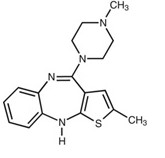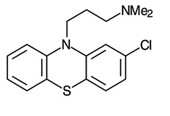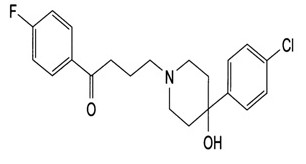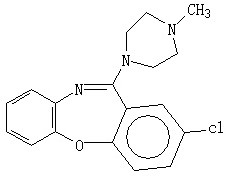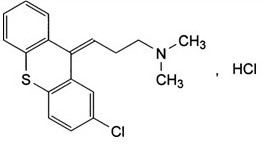Introduction
The reason why stability test is carried out on drugs is to avail proof on how the excellence of a drug material or substance changes with time depending on environmental factors for example humidity, temperature, and light, and to ascertain a re-test timeframe for any given drug material or shelf life and suggested storage conditions. The shelf-life of any given drug substance is the time the drug is known to remain within acceptable or suitable conditions for potency or effectiveness and other vital parameters (Carstensen, 1990, p. 2). Note that drugs do not automatically become ineffective after the expiry date; it means that the drug may perhaps only have reached the potency or effectiveness limit/boundary of the drug’s active ingredient. But if additional physicochemical individuality for example pH, particle size, the rate of dissolution of capsules and tablets have altered, or poisonous degradation drugs reach intolerable levels, such drugs are not safe for use.
Making drugs past their expiry date may simply lead to a lesser dose of drug active element than the one declared on the label. On the other hand, it may lead to altered bioavailability or safety hazards and therefore it is always good for expired drugs not to be administered. Care must be taken on how drugs are stored and administered. In this discussion will the stability of chlorpromazine, thioxanthene, haloperidol, Loxapine, and Olanzapine (Zyprexa) drugs and the kind of precautions that should be employed to minimize or prevent the degradation of the mentioned drugs due to hydrolysis oxidation/reduction. Degradation or decomposing of processes of these drugs includes degradation as a result of light, oxidation, and hydroxylation or hydrolysis. This is due to the functional groups on the drug and the unavoidable presence of water molecules and oxygen in the air. Degradation still do occur but at a lower rate when oxygen, light, and water are controlled (Connors & Amidon, 1986, p. 4)
Structural Formula and Functional Groups of Drugs
Processes of Drug Deterioration
Drugs decompose or degrade via oxidation, degradation, or decomposition by light and hydrolysis process. The hydrolysis process is exaggerated when a given drug comes in contact with water and it can be minimized or prevented by limiting drug exposure to water. For drugs that must be synthesized in an aqueous solution, the technician must buffer the solution to a certain pH which does not favor hydrolysis. All the above five drugs are vulnerable o hydrolysis and therefore are frequently packed in single-dose units. The process of oxidation is a major headache since most drugs with oxygen in the atmosphere give different products thereby rendering the drug dangerous for human use or useless since the active ingredient are usually converted to different products. Oxidation and photochemical degradation processes happen mostly by means of free radicals.
The process of oxidation can be eliminated or reduced by excluding oxygen and this is done by flushing the solution with an inert gas such as neon or group eight elements prior to sealing the ampoule. We also reduce the chances of degradation appreciably by using colored packaging materials to protect the drug from the heat in addition to single entity blister packaging. The light energy that is taken in is converted to physical or chemical energy and the rest is re-emitted back to the environment. If the absorbed energy is enough, reorganization of molecular bond or breaking/cleavage can occur at any weej bond. We can reduce or eliminate photodegradation by packaging drugs in amber or dark glass bottles or employing colored film.
The excipient lowers the stability of the drug by varying the pH of the humidity layer, some catalyzing or in extreme cases reacting with the drug direct to give undesired products. Therefore the choice of excipients must be done carefully to avoid this (Connors & Amidon, 1986, p. 5)
Chlorpromazine
Chlorpromazine is a propylamino phenothiazine derivative; it is the prototypic phenothiazine representative or agent. Chlorpromazine is a crystalline powder, bitter in taste, has no smell, and is white in colour. It is both soluble in alcohol and water and is kept in sterile water solution in a range of 3-5 pH buffer solution. Below are functional groups of chlorpromazine and decomposition process.
- Hydroxylation……………………………………………..carbon 7
- Conjugation with glucuronic acid………………………….Aminoalkyl
- N-oxidation………………………………………………..N-10
- Oxidation of a sulfur atom…………………………………S-5
- Dealkylation………………………………………………..Alkyl chain at N-10
The functional groups N-10 and S-5 undergoes oxidation and this is because the sulphur group is exposed to less molecular crowding and weak intramolecular force between sulphur and carbon due to electronic repulsion makes cleaving of this drug possible. Additional, hydroxylation is possible to crowding at carbon 7 which leads to repulsion among molecules thereby weakening the covalent body and consequently decomposition in presence of water. The products of deterioration or decomposition of chlorpromazine are desmethyl-chlorpromazine, didesmethyl- chlorpromazine, 7-hydroxy-CPZ, chlorpromazine sulphoxide and chlorpromazine N-oxide (Carstensen, 1990, p. 3)
Chlorpromazine absorbs light and this is converted to chemical energy which causes molecular bond or cleavage of alkyl chain at N-10 to give ethyl products e.g. desmethyl-chlorpromazine. Molecularly, this is due to the long branch chain of N-ethyl and the weak bond between carbon and sulphur. While oxidation at a sulfur atom will lead to 7-hydroxy-CPZ and chlorpromazine sulphoxide and oxidation at nitrogen atom will give chlorpromazine N-oxide as the undesirable product. Chlorpromazine should be protected from light by using dark bottles or keeping them away from direct lighting. Also, the tablets should not be crushed as this increases the surface area leading to a higher rate of reaction (Long, 2009, p. 2)
Olanzapine
The functional groups of this drug include 10-N-glucuronide which undergoes glucuronidation and 4’-N which undergoes oxidation reaction. In the presence of oxygen, the nitrogen-carbon bond reacts with oxygen causing cleavage at 4’-N to give 4´-N-desmethyl olanzapine as a product of oxidation. On the other hand, the 10-N-glucuronide functional group undergoes glucuronidation to give 10-N-glucuronide. To reduce the chances of oxidation, we maintain an inert environment at all times and buffer the solution to favorable pH (Robert, 2010, p. 2).
Haloperidol
This is an antipsychotic drug and is a butyrophenone group of antipsychotic and acts the same way as phenothiazines pharmacological. This long chain decanoate ester is utilized in injecting schizophrenia patients after every 4 weeks to counter the drawbacks intrinsic to its orally taken counterpart that have higher tendency of causing side effects or increase risks. Haloperidol has high bioavailability and is rapidly and well absorbed and is almost 50 times more efficient than its counterpart chlorpromazine (MedicineNet, 2010, p. 1).
The functional groups of haloperidol which are theoretically susceptible for hydrolysis, oxidation, and reduction include piperidine- N and Ketone group on butane chain which undergoes oxidation. The products of decomposition of haloperidol are 4-(4-chlorophenyl)-4-hydroxypiperidine and pyridinium metabolites resulting from oxidation. This drug should be kept at a temperature below 40 °C and to ensure high quality, it must be kept between30 °C and 15 °C. Since haloperidol undergoes oxidation, the drug should be stored in an air-tight container and this container must be light-resistant i.e. should be amber. Finally, it should be protected from freezing and therefore temperature ranges must be obeyed to eliminate chances of hydrolysis.
Loxapine
Loxapine is also called 2-Chloro-11-(4-methylpiperazin-1-yl) dibenzo [b,f][1,4] oxazepine and is an antipsychotic medication employed mainly in treating schizophrenia. Loxapine molecular structure is closely related to structures of clozapine. The functional group that is responsible for oxidation is Piperidine N and while C-8 and C-7 are prone to hydroxylation. When loxapine undergoes hydroxylation at C-7 it gives 7- hydroxyloxapine, which is conjugated to the glucuronide or sulfate while hydroxylation at C-8 gives 8-8-hydroxyloxapine, which is conjugated to the glucuronide or sulfate. This hydroxylation is due heavy molecular weight of loxapine and the addition of water molecules to the structure plus electronic repulsion among molecules leads to decomposition of loxapine. Also, this degradation is a result of a weak covalent bond between carbon-carbon bonds (Connors & Amidon, 1986, p. 5)
The drug in the presence of oxygen undergoes oxidation to form Hydroxyloxapine-N-oxide and Loxapine-N-oxide. The reasons are explained above. An inert environment is maintained or air-tight bottles should be used to store drugs that contain loxapine as an active ingredient. Since this drug is also affected by light, dark or amber bottles must be used for storing these drugs and avoiding freezing the drug. This drug should be kept at a temperature below 40 °C and to ensure high quality, it must be kept between30 °C and 15 °C.
Thioxanthene
It is a chemical compound also known as 9H-thioxanthene in which sulfur replaces oxygen atom in xanthenes compound. An example in this family includes Chlorprothixene Hydrochloride which is used in treating psychoses and schizophrenia. Due to weak intramolecular force at C-6 and C-7, in the presence of water, it undergoes hydrolysis to form 6-hydroxy-chlorprothixene hydrochloride and 7-hydroxy-chlorprothixene hydrochloride respectively. Molecularly, this is possible due to the cis arrangement of molecules and repulsion between ethyl groups on the crowded nitrogen atom. When exposed to oxygen, it undergoes oxidation/reduction to form sulfoxide and demethylated analogues. Same storage conditions should be applied when handling thioxanthene to avoid oxidation/reduction and hydrolysis (Pharmaceutical Society of Australia, 1992, p. 2).
Reference List
Carstensen J. (1990). Drug Stability: Principles and Practices. In: Drugs and the Pharmaceutical Sciences. Vol 43. New York: Dekker, 1990
Connors K. and Amidon G. (1986). Chemical Stability of Pharmaceuticals: A Handbook for Pharmacists. 2nd Ed. New York: Wiley
Long P. (2009). Internet Mental Health: Chlorpromazine. Drug Monograph.
MedicineNet (2010). Medications and Drugs: Haloperidol. Health Information, Web.
Pharmaceutical Society of Australia (1992). Australian Pharmaceutical Formulary and Handbook. 15th ed. Canberra: Pharmaceutical Society of Australia.
Robert C. (2010). Schizophrenia Research: Olanzapine. BioInfoBank Institute, Web.
